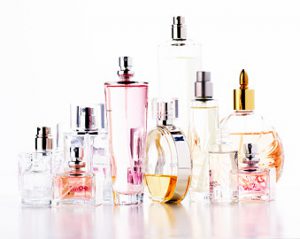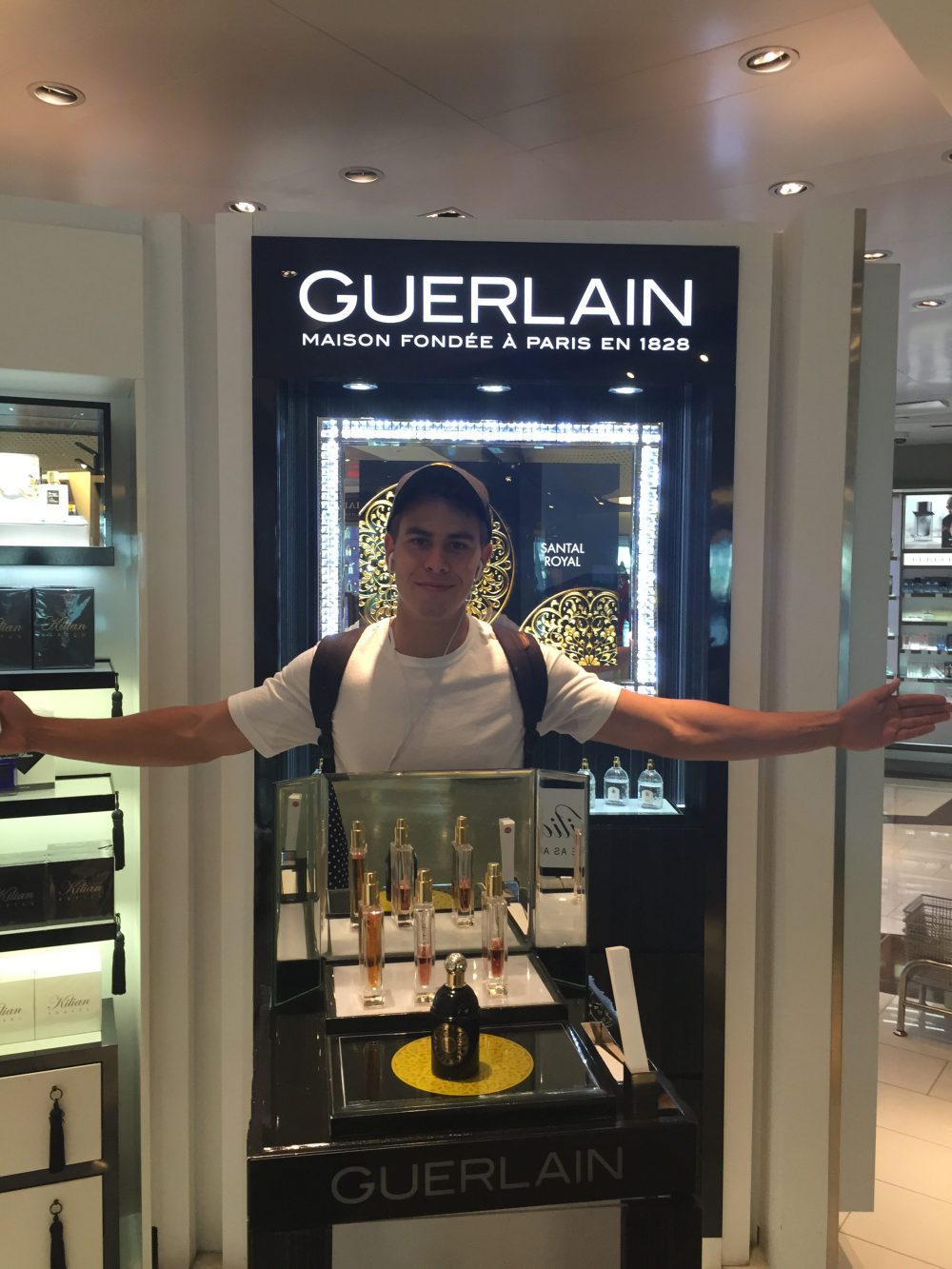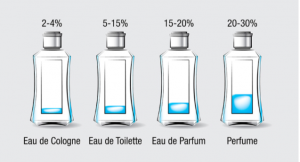One of the most common questions asked by new fragrance aficionados is “What’s the difference between Eau de Parfum and Eau de Toilette?”. It’s a question I got asked most recently by my son while we were at JFK waiting to board a flight. OK I did kind of drag him in to the duty free shop but he was a good sport about it.
It’s easy to be confused about the various terms used in fragrance formulations. Sadly, many fragrance salespersons aren’t given proper training to help explain the inherent qualities in each product type so this leads to more confusion.
I’ll try and keep it simple.
Fragrances are essentially a mix of alcohol (ethanol), water and fragrance oils. A rule of thumb is that the higher the concentration of these oils, the longer a scent lasts on the skin and the higher the price tag.
Fragrances come in many forms and have many different names but there are four general categories: Perfume, Eau de Parfum, Eau de Toilette and Eau de Cologne. Each is different in its concentration of fragrance oils. Remember that Perfume (also called Extrait) is the most intense form of fragrance, followed by Eau de Parfum, Eau de Toilette and Eau de Cologne.
- Perfume: Contains between 20-30 percent of perfume oils. The high ratio of fine oils used justifies the higher price and smaller bottles. It tends to have a thicker, slightly oilier consistency. Perfume tends to be sold in stopper bottles rather than sprays. It’s also long-lasting and can stay on the skin for up to 24 hours in some cases.
- Eau de Parfum: Contains between 15-20 percent of perfume oils. EDP generally lasts on the skin for up to 5 hours and provides a good impression of the fragrance. Generally it is more refreshing due to an increase in top and heart notes and lacks a perfume’s softness and lasting quality.
- Eau de Toilette: Contains between 5-15 percent of perfume oils. Many designer perfumes are released in EDT and EDP concentrations but the toilette is fresher, lighter and has more emphasis on the top notes. Most of the scent will be gone within 4 hours.
- Eau de Cologne (also called Eau Fraiche): Contains between 2-4 percent of perfume oil. The most fleeting of fragrance types, it normally fades within 3 hours before needing to be reapplied. Although it was originally enjoyed by both men and women, it is now more commonly used for fragrances mostly worn by men.
The percentages I’ve given for perfume oil are general guidelines. They will vary from source to source and there are no universally agreed ratios.
Although Perfume is the longest-lasting concentration, that doesn’t necessarily mean that it will provide the most noticeable scent. Perfume is generally dabbed on the skin pulse points and near the collarbone, whereas EDT can be sprayed more liberally on the body and so seem more pronounced.
But there’s more to it. To further complicate things, many fragrance houses create different versions of their most popular scents for different occasions or limited editions. Some will also do this for different seasons as well. Summer is the time when you will often find lighter versions of popular scents which will actually smell quite different. This is because they emphasize the lighter and more fresh notes such as white florals, citrus or green/water notes. These are often referred to as an Eau Fraiche or a L’Eau.
Choosing the right bottle to purchase can be problematic. Although there is the obvious difference in the concentration of fragrance oils, there may also be a difference in the quality and notes used within a fragrance line. Never make the assumption that the Eau de Parfum is going to smell like the Eau de Toilette because that may not be the case. 
If you are interested in a particular scent, do your research by trying the different formulations on your own skin. You can also go onto websites like Fragrantica which list the notes used in their extensive fragrance library(which they they break down by top, middle and base notes) if you want to check it what they are before testing it on yourself. For me this is more entertaining and educational than anything else because there’s no substitute for actually testing it on yourself.
The best way to ensure that you will be happy with a scent is to spritz or dab it on yourself then wait a few hours to see how it wears.
When in doubt, follow your nose!
Until the next time,





